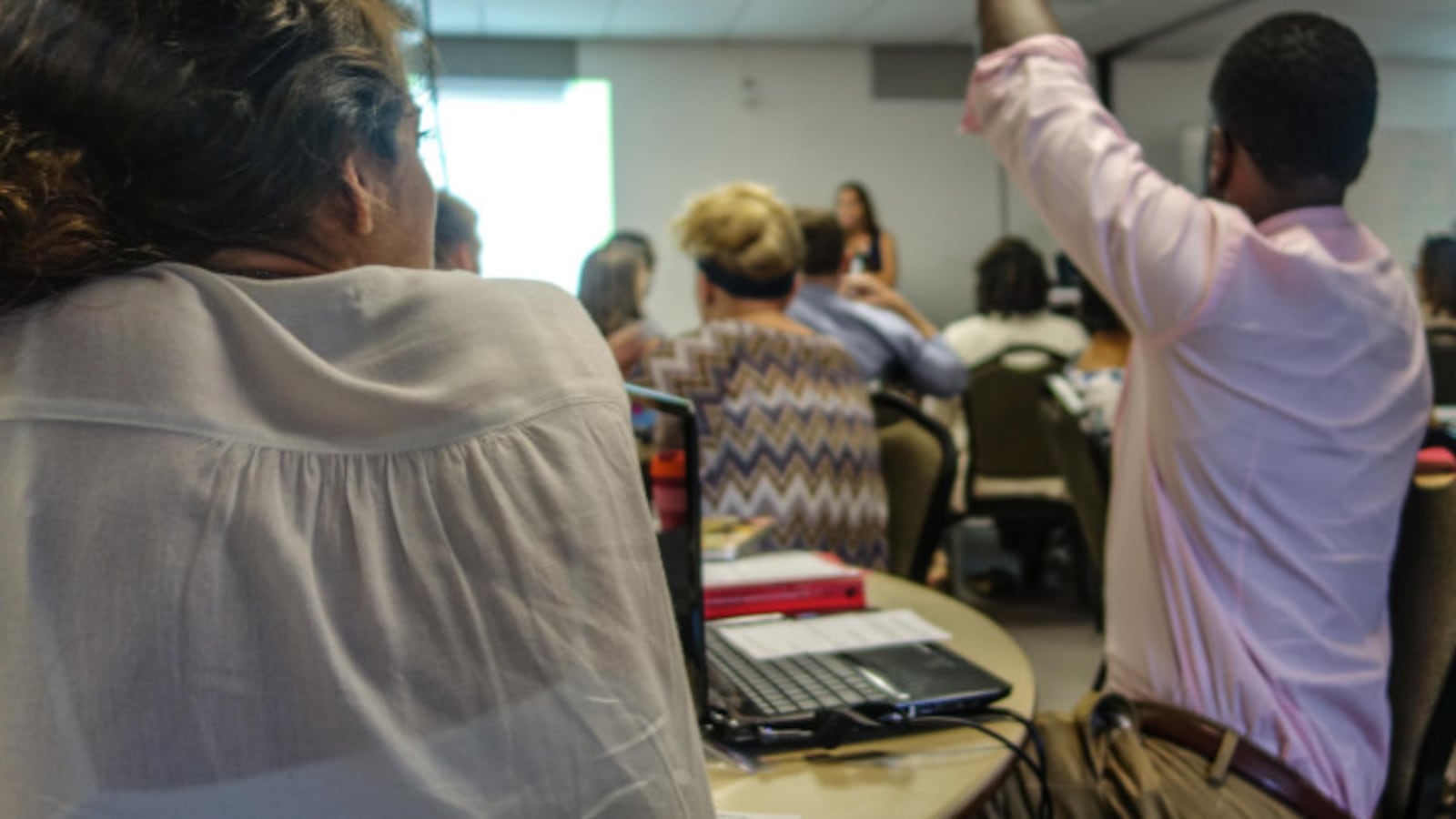New York City Schools Chancellor Richard Carranza deserves praise for confronting racism in the public education system. This academic year, he launched a $23 million initiative that aims to change educators’ hearts and minds through required trainings on implicit bias.

My message to him: good luck. In the 14 years I served as a high school principal, I found no area of professional development to be more frustrating, divisive, and ineffective than the sessions we held on race.
While the majority of the staff in my school were white, we were more diverse than most schools and, I like to believe, more racially conscious. Nevertheless, staff members did sometimes say racially insensitive things, and divisions between staff too often broke along color lines.
To tackle this, over the years, we had various respected staff members lead workshops, used grant money and school resources to bring in highly-rated consultants, and had the entire staff attend trainings off-site run by city education department staff. These one-off trainings ranged in quality and tone, but fell into the same traps — and didn’t help us truly change our school’s culture around race. They virtually never made a distinction between the black and Latino experience or considered class. And they tended to be deeply rooted in simplistic ideas about race that alienated participants.
For instance, as a gay principal in a mixed-race relationship of 20 years who has been a caretaker for a Latino immigrant child, I found it reductivist that I was required to identify myself as simply a “white man” every time I would speak publicly during the trainings. In one exercise that spanned two days, principals lined themselves up by how much they were victimized by racism.
In many workshops I attended over the years, racism was presented as a simple binary of oppressors and oppressed. (In my own school, we would teach students about intersectionality: the idea that all social categories such as race, gender, class, and sexual orientation create overlapping and interdependent systems of discrimination or disadvantage.)
The reactions of my staff members to these trainings varied, but typically included anger among some white staff members that they felt they were being called racist, anger among some staff of color that it wasn’t fixing everything, and a general feeling that it was too basic or boring or irrelevant. Some staff would always say it was vaguely helpful or that it was good that we were talking about the issue. The consensus, though, was that these one-off trainings were not terribly effective.
Research generally supports the feelings of my staff, especially around anti-implicit bias trainings. A recent meta-analysis of 492 different studies done on such programs found that “changes in implicit measures [of bias] are possible, but those changes do not necessarily translate into changes in explicit measures or behavior.”
I worry that the education department is endeavoring to give hundreds of thousands of incredibly diverse school staff the same lesson, and it’s not working for many of them. And recent news stories make clear that the city’s training is provoking a backlash that may prove to be counterproductive to Chancellor Carranza’s worthy goals.
This is not to say, of course, that training a largely white teaching force about race is not necessary. There is certainly a baseline of knowledge and vocabulary that can be effectively transmitted through clear professional development — like understanding stereotype threat and how this can affect the academic performance of different groups of students, and the long history of racism, for example.
But the tactics generally used by the DOE too often lack nuance, and don’t foster an atmosphere of trust. If teachers find the sessions condescending, the education department won’t be able to change hearts and minds.
What I think did help my school community was prioritizing diversity in hiring, listening to and empowering black and Latino staff and community members, and encouraging our own difficult conversations across racial lines.
I, for one, have needed to learn, and I continue to learn, to check my privilege as I become more sensitive and aware to the experiences of others. It has made me a better teacher and person. That has not happened through one-off workshops or even repeated, repetitive professional development. It has grown through engaging in informal, courageous conversations about diversity, continuing my own reading, and my collaboration with diverse staff members.
Since our teaching staff tended to be more white than our support staff, we made sure that counselors, paraprofessionals, and community members could attend school meetings and sit on committees, for example. More importantly, when some staff members of color told me they did not feel that my open door was really open, I worked to seek out their viewpoints and follow their lead as much as possible, especially when it challenged my own cultural norms. And I’m sure I still have more to learn.
These kinds of changes are harder to enact than one-off workshops, but I believe they are the only thing that works.
John Wenk is the former principal of Lower Manhattan Arts Academy.
About our First Person series:
First Person is where Chalkbeat features personal essays by educators, students, parents, and others trying to improve public education. Read our submission guidelines here.


